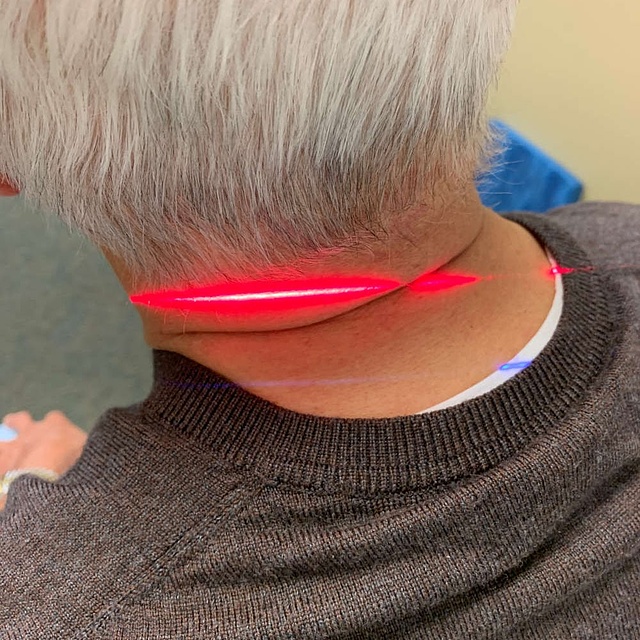Laser vs. LED Therapy: Understanding the Differences and Effectiveness
In the realm of light therapy, the comparison between lasers and light-emitting diodes (LEDs) has been a topic of significant interest. Both sources of light share the same mechanism of action and are commonly used in therapeutic applications, often emitting similar wavelengths in the red or near-infrared spectrum. However, there are distinct differences between the two, and understanding their variances is crucial in evaluating their effectiveness for various medical and therapeutic purposes.
Laser vs. LED: The Variances
Laser light is characterized by its monochromatic and coherent properties, consisting of a narrow range of wavelengths and being capable of producing much higher powers than LEDs. On the other hand, LED light is non-coherent and divergent, emitting a wider range of wavelengths and requiring more specialized optics to focus the available energy into desired areas. These differences have implications for their penetration capabilities and energy delivery into the body’s tissues[3][4].
Effectiveness of Laser and LED Therapy
The effectiveness of laser and LED therapy has been a subject of debate, with proponents of laser therapy emphasizing its superiority due to properties such as coherence and monochromaticity. Studies have suggested that laser light may achieve greater and deeper stimulative and therapeutically beneficial effects compared to LED light, particularly for biostimulative effects in-vivo. However, it is important to note that LED therapy, while less efficient than laser therapy, can still be useful, especially for superficial structures[5].
Clinical Perspectives
From a clinical standpoint, the choice between laser and LED therapy depends on the specific medical application and the desired treatment outcomes. Lasers are often favored for their ability to reach deeper tissues and their potential for superior performance in certain therapeutic contexts. However, LEDs can be effective in their own right, particularly for applications that do not require the same level of power and penetration as laser therapy.
At Sirucek Chiropractic Neurology Clinic we use low-level laser therapy (LLLT) which has gained attention for its potential in pain relief and tissue repair. One of the notable advancements in this field is the Erchonia EVRL (Erchonia Violet/Red Laser), a handheld device that utilizes both violet and red lasers at specific wavelengths. This innovative technology has sparked interest and raised questions about its effectiveness, particularly in comparison to LED therapy.
Understanding the Erchonia EVRL Laser
Erchonia, a leading company in LLLT technology, has developed the EVRL Laser, a smart phone-sized handheld device that combines violet and red lasers at wavelengths of 405nm and 635nm. This unique combination offers the versatility of two specific wavelengths, with the red laser known for its superb healing qualities and the violet laser providing anti-bacterial and anti-microbial properties[8][10].
Effectiveness of the Erchonia EVRL Laser
The Erchonia EVRL Laser has shown promise in clinical studies, with the combination of red and violet wavelengths leading to better results than the dual red alone. The violet wavelength has also demonstrated effectiveness in its anti-bacterial and anti-microbial properties. This makes the EVRL Laser a versatile tool for a wide range of treatment conditions, stimulating complexes 6, 7 & 9[10].
Clinical Applications
The Erchonia EVRL Laser holds potential for various clinical applications, including pain relief, inflammation reduction, and post-operative healing. Its unique combination of red and violet wavelengths makes it a valuable tool for healthcare professionals seeking non-thermal, low-level laser therapy solutions for their patients. The antimicrobial properties of the violet wavelength further enhance the range of conditions that can be effectively treated with the EVRL Laser[8][9].
In conclusion, the Erchonia EVRL Laser represents a significant advancement in low-level laser therapy, offering the benefits of both red and violet wavelengths in a single handheld device. Its effectiveness in clinical studies and its antimicrobial properties make it a valuable tool for pain treatment, inflammation reduction, and a wide range of other conditions. As with any medical technology, the specific application and treatment goals should be carefully considered when evaluating the potential benefits of the Erchonia EVRL Laser for individual patients.
Conclusion
In conclusion, while both laser and LED therapy share similarities in their mechanism of action and their potential for pain and inflammatory reduction, their variations in coherence, monochromaticity, and energy delivery have implications for their effectiveness in different medical and therapeutic scenarios. The choice between the two depends on the specific treatment goals and the depth of tissue penetration required. Ultimately, both modalities have their own unique advantages and can be valuable tools in the hands of healthcare professionals, each suited to different applications based on their specific properties and capabilities.
Citations:
[1] https://www.coherent.com/resources/white-paper/solutions/life-sciences/Coherent_Whitepaper-Lasers_vs_LEDs.pdf
[2] https://www.ncbi.nlm.nih.gov/pmc/articles/PMC6091542/
[3] https://lightforcemedical.com/understanding-the-differences-between-led-and-laser-therapy/
[4] https://www.erchonia.com/true-lasers-vs-leds/
[5] https://www.aspenlaseru.com/class-iv-laser-therapy-reserach/led-light-vs-laser-light/
[6] https://www.erchonia.com
[7] https://youtube.com/watch?v=5s495crQzqw
[8] https://www.erchonia.com/products/evl/
[9] https://erchonia-emea.com/pain-management/evrl/
[10] https://www.erchonia.com/products/evrl/


